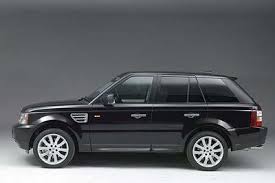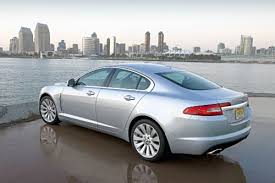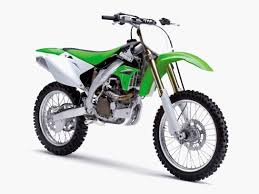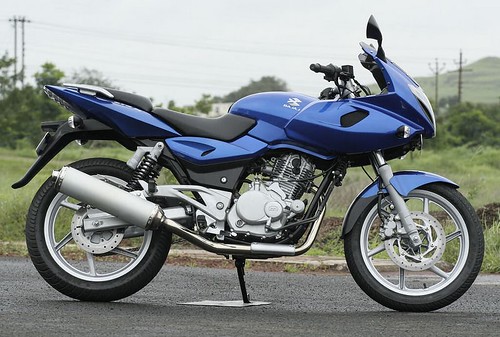
The Riversimple Urban Car, which was unveiled on Tuesday 16th June at 9.30am at London’s Somerset House, is a new hydrogen-powered urban vehicle that presents solutions to some of the most pressing problems facing the modern automotive industry.
The lightweight, two-seater Riversimple Urban Car not only achieves performance figures never before attained from existing hydrogen fuel cell technology but also challenges some of the most fundamental conventions on which the last century’s car industry was founded but which have since proved unsustainable. Riversimple will both release the design of the vehicle under an Open Source license and lease the vehicle as a fully bundled service – with ongoing maintenance, support and fuel – in place of the conventional cycle of manufacture, sale, servicing and obsolescence.
The vehicle was built at Silverstone, near Towcester, Northants. Alan Docking has provided all the facilities for the build of the vehicle at Alan Docking Racing, Cheyne Bromfield assembled the vehicle at Silverstone..
ALL ABOUT THE CAR
How Does the Riversimple Urban Car Work?
The Riversimple vehicle is conceived within an innovative new architecture for cars. It embodies various key features - hydrogen fuel cells, four electric motors, one on each wheel, regeneration of electricity by these motors when the car is braking – known as regenerative braking - and a body made of lightweight composites. However these do not on their own explain the breakthrough in energy efficiency achieved.
Although novel in the industry, they are not unique and none make economic or performance sense on their own. The breakthrough really comes through the synthesis of them all – the benefits derive from their interactions, requiring that we combine them all. Here is an illustration of how Riversimple has rearranged the components in what we call a Network Electric Vehicle.
The two principles that really are new (conceived by Amory Lovins and the Rocky Mountain Institute) and that make this synthesis so powerful are decoupling acceleration and cruise demands and mass decompounding
Decoupling acceleration and cruise means that the fuel cell needs only to be large enough to meet the maximum steady demand when cruising, which is usually only about 20% of the maximum power required when accelerating.
In a conventional car, acceleration also has to be provided by the engine; but as a car is only accelerating for about 5% of the time, and the power needed then is five times what it is when cruising, it means that for 95% of the time the car is carrying around an engine and transmission that is five times larger than necessary.
In our network electric vehicle, almost all braking is done by the electric motors, capturing the energy of the car in motion, rather than using conventional brakes that just waste the energy as heat. This energy is then stored in a bank of ultracapacitors which can provide 80% of the power required for acceleration. This allows us to have a fuel cell a fifth the power than would be required in a conventional car.
Mass decompounding is an emergent property of whole system design – designing the car as a whole system rather than attempting to squeeze a fuel cell into a car architecture that is designed for a combustion engine. The reduced size of the fuel cell and elimination of a gearbox and driveshafts, results in a weight reduction. This leads directly to a lighter chassis, as this is usually designed to hold on to a heavy engine and gearbox in accidents. This in turn means less power is needed, which means lighter components, which means a lighter chassis, meaning less power and so on, and this effect is magnified by using lighter materials, composites, for the chassis as well. These weight reductions make power-assisted systems for brakes and steering redundant, leading to further mass decompounding and improvements in efficiency.
The hydrogen fuel cell (explained in the section All About Hydrogen) is about 50% efficient, double that of a petrol engine. The combination of this efficiency and the new, and much more efficient, architecture allows for a vehicle which is more sustainable because it needs far less hydrogen energy. Further fuel and emissions savings are gained because, unlike an internal combustion engine, the electric motor is not running when the car is stationary in traffic.
The Riversimple urban car uses a 6kW fuel cell. (For comparison, Honda is using a 100kW fuel cell in its new Clarity model currently being trialled in California - admittedly in a four seater car, not a two seater). In the Riversimple car, less hydrogen needs to be carried (and less held at the filling stations) and the costs of the fuel cell drop dramatically.
We have been working with Horizon Fuel Cell Technologies of Singapore, who have developed a highly efficient yet simple fuel cell system for our urban car. As the output required of the fuel cell is less than in most fuel cell prototypes, Horizon has been able to prioritise cost reduction in the development of the system. This has been the focus of their research since they were founded and so there is a natural synergy between their technology and our approach to commercialising hydrogen fuel cell vehicles. Together we are pursuing a combined development programme on the next generation for our production prototype vehicle.
The ultracapacitors which store electricity can also be smaller: Riversimple urban cars have just 21 kg of ultracapacitors, capable of absorbing over 30kW of power from regenerative braking, and of delivering 15 kW for bursts of acceleration of up to ten seconds, enough time to reach maximum cruising speed.
The result is a car with an expected fuel consumption equivalent to 300 miles per gallon, a range in excess of 200 miles, a top speed of 50mph, and greenhouse gas emissions at 30 gms per km (well to wheel), less than a quarter of the most efficient petrol-engined cars currently available. Note: The Polo Blue Motion is currently the lowest emission car available at 99g/km but this is only “tank to wheel” – when extraction, refining and distribution of the petrol is included this rises to 121 g/km “well to wheel”.
Safety
Hydrogen is less flammable than petrol. The self-ignition temperature of hydrogen is 550 degrees Celsius while petrol varies from 228-501 degrees Celsius, depending on the grade.
Hydrogen disperses fast. Being the lightest element (fourteen times lighter than air), hydrogen rises and spreads out quickly in the atmosphere. So if a leak occurs, hydrogen gas quickly becomes so sparse that it cannot burn. Even when ignited, hydrogen burns upward and disappears, rather than hanging around to burn and cause damage. If it does burn it radiates much less heat because there is no incandescent carbon in the flame and therefore causes less damage to the surroundings than a petrol fire. Hydrogen is a non-toxic, naturally-occurring element in the atmosphere. By comparison, all petroleum fuels are poisonous to humans.
Hydrogen can be stored safely. In the late 1950s Lockheed Aerospace attempted to detonate hydrogen in a series of 61 tests: in all but two it failed to explode. In 1980 Lockheed Martin undertook research for the NASA Lewis Research Centre to determine the risk if a hydrogen plane should crash. Their conclusion was that liquid hydrogen caused less damage than normal jet fuel since hydrogen evaporates quickly, burns rapidly and gives off little heat. (More information from the Norwegian Bellona Foundation report “Hydrogen Status & Possibilities” compiled with support from BP, BMW and the Norwegian Institute for Energy Technology).
BMW Group research included one test in which the tanks are completely enveloped in flames at a temperature of 1,000 degrees Celsius for over an hour before being subjected to the conventional series of crash tests. They say “The results entirely validated the safety concept.”
Composites are now widely used in the racing and space industries. They are highly rigid and strong materials. Mercedes and their Formula 1 partners McLaren say they use composites in racing cars because it can absorb five times as much energy in impacts as steel or aluminium. It is these qualities which make composite bodies mandatory for Formula 1 racing cars, and which has contributed to reductions in death and injuries in the sport.
Who else is producing Hydrogen Fuel Cell Cars?
Several of the large automotive manufacturers have been researching hydrogen fuel cell powered cars but only Honda has produced one for public use – its FCX Clarity model which is available to lease in California. Some companies have provided test cars to universities and government departments in Japan and the US. China too has been investing heavily in researching hydrogen cars.
All the manufacturers have concentrated on taking the conventional heavy steel body and attempting to slot in a hydrogen fuel cell. All have found it an expensive route to follow, and some companies, such as Ford, have given up the research. 200 of the Honda Clarity have been produced and, at this production volume, their fuel cell system costs $900,000 for each vehicle.
As far as is known no other company has produced a demonstrator for a mass production vehicle which is light weight, with four electric motors and recovering 50% of the energy in regenerative braking, and none have a car close to commercial production in the near future.
Furthermore, the current economic downturn has made several companies focus solely on survival, as they plead for government handouts to continue supplying conventional environmentally damaging heavy steel cars which customers are not buying in sufficient quantities.
Car Fact Sheet
The Riversimple urban car is a concept demonstrator: the specifications will change as the car is redesigned and information is gained from full field testing.
Weight: 350 kg
MPG: c. 300 mpg equivalent in energy terms
Greenhouse gas emissions: c. 30g/km (well to wheel) in the urban cycle with hydrogen produced from natural gas
Top Speed: 50 mph
Acceleration 0 – 30 mph in 5.5 seconds
Range: 240 miles
Lifespan: 15-20 years
Service Intervals: Annual
Monthly cost: c. £200
Fee per mile: c. 15p
ALL ABOUT HYDROGEN
Why hydrogen?
The effects of CO2 and other greenhouse gas emissions are now well recognised: we need to reduce our emissions of greenhouse gases by upwards of 80%, and reduce local air pollution particularly in cities and along principal routes.
For transport to deliver the required reductions we need to dramatically reduce our reliance on the oil fuelled internal combustion engine.
There are several technologies being researched to do this: all present challenges such as range, production impact, maturity of the technology, ease of refilling, refuelling infrastructure, safety etc.
Riversimple’s first car is powered by a hydrogen fuel cell. We are not a hydrogen or a fuel cell company; if something better emerges we won’t be shy to adopt it. We are convinced that hydrogen and fuel cells will never be as dominant as petrol and combustion engines are now and there will be a much greater mix of powertrains and fuels in the future. BUT - no other technology on the horizon is remotely as efficient in cars that need a range in excess of 150 miles.
We are confident that in the urban cycle our vehicle will emit less than 30g/km CO2 well–to-wheel, with hydrogen generated from natural gas - less than 25% of the CO2 emissions of the Polo Bluemotion, believed to be the car currently with the lowest emissions. If the hydrogen is generated from electricity from wind, this figure would drop to 3g/km.
Note: well-to-wheel is the most valid measure to use when comparing the emissions of different vehicles. It recognises that all vehicles are responsible for emissions – but some of them don’t emit anything as they drive, because their emissions are from a power station or a hydrogen production plant.
How a hydrogen fuel cell works
What happens inside a fuel cell is simply the reverse of electrolysis; instead of passing electricity through water to produce hydrogen and oxygen, hydrogen and oxygen are passed through a fuel cell to produce water and electricity. The fuel cell comprises membranes that separate air and hydrogen. The hydrogen gas entering the cell is split into separate protons and electrons by platinum acting as a catalyst. The protons travel through a membrane that doesn’t allow electrons through. The electrons find another way along a wire to meet up with the protons and thereby make an electric current, which powers the electric motors. On the other side of the membrane, the hydrogen protons and electrons are united with oxygen, which produces only heat and water in the exhaust. This process is about 50% efficient; double that of a petrol engine.
Hydrogen Generation
Hydrogen can be made from any energy source, which is why it is more accurate to describe hydrogen as an energy carrier not a primary fuel. If we invest in hydrogen vehicles, we decouple our refuelling infrastructure and vehicle technology from oil and free it up to use almost any energy source.
We thus allow different regions in the world to use the most appropriate energy source to produce their hydrogen, depending on what they have. It also allows us to make a seamless transition over time from 100% non-renewable brown hydrogen, (natural gas is mostly used at present) to 100% green hydrogen without any further investment in vehicle technology and without the end-user being aware of the change. This buys us necessary flexibility.
Hydrogen does not require extensive mining and transport to get it to where it can be used. It can be generated locally, and we are not using up a finite resource which will run out and won’t be available to our descendants. Hydrogen can act as a way to store electricity from renewables which is not always produced when most needed - such as electricity from wind produced at night.
A 5 MW (commercially sized) wind turbine operating at 30% capacity could produce over 240,000kg of hydrogen per annum. Our urban car requires 26kg per annum for 6000 miles, so one of these turbines could power 9,184 cars per year, excluding energy needed to transport the hydrogen to the refuelling stations.
Hydrogen Distribution
Hydrogen sceptics talk of the chicken and egg problem of who is going to build cars before there is a refuelling infrastructure and who is going to install an infrastructure before there are the hydrogen cars. The concern is that if a company builds a motorway capable car, it needs a national infrastructure before it can be launched. However, an urban car never strays far from the area in which it lives, so we plan to focus on small cities at first, no bigger than Oxford, in which we can launch cars, with a 200 mile range, and one refuelling point. Driving through the city centre once a week (or less often) to the refuelling station is feasible for users in cities of this size.
We will then be able to work with infrastructure providers, developers and proactive councils, to set up similar hydrogen centres in adjoining cities. Essentially, we will be building a nationwide infrastructure piece by piece– without taking a nationwide gamble, thus cracking the chicken and egg dilemma.
We are confident that this route will be attractive to gas companies as other hydrogen vehicles being developed need substantial sized fuel cells to run, and are far from commercially viable yet. The Riversimple car will consume far less hydrogen than other prototype vehicles, meaning that less hydrogen is required at each refill, the rate of filling is lower and potentially the pressure is lower. All these factors reduce the capital investment required for refuelling stations as the gas companies do not face the problem of generating and moving such large quantities of hydrogen.
The Hydrogen Challenge
The environmental challenge now is to manufacture hydrogen from renewable sources. Riversimple will not have succeeded if it creates a demand for hydrogen which then continues to be manufactured from coal, oil, gas or nuclear power stations.
Riversimple is supported by BOC and its parent, The Linde Group, one of the largest international suppliers of hydrogen and hydrogen refuelling stations. According to Mike Dennis, Head of Marketing at BOC: “A real achievement of the Riversimple concept is that it represents a step change in the efficient use of hydrogen fuel. This allows much greater use to be made of it in urban situations while the refuelling infrastructure is being installed.
“As leaders in hydrogen technology we are developing processes that will produce hydrogen from renewable sources, which will make hydrogen vehicles a truly ‘green’ transport option.”
Hydrogen, Batteries and Electric
There are now several car companies developing electric cars powered by batteries. Such vehicles have their uses but despite extensive research, batteries for cars are still heavy, leading to compounding weight and inefficiency if range is to be increased. Their range is still limited, they take time to recharge and there are challenges about recycling them. The new generation of batteries which are claimed to need shorter times to recharge will help, but they still need heavy duty recharging stations with a commensurate impact on electricity demand.
Riversimple is confident that our hydrogen car provides a better solution: a lightweight car needing less power, greater range, and refuelling as quickly as a petrol tank. It is also easier to recycle – 90% of the components of the fuel cell can be reconditioned.


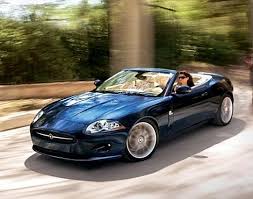 cording to Tata Motors the lauch will pave a way for the penetration of the brand into India.
cording to Tata Motors the lauch will pave a way for the penetration of the brand into India.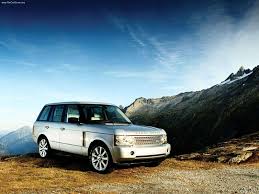 the fifth highest trick and bus market is soon rolling out its Nano, the cheapest car of the world.
the fifth highest trick and bus market is soon rolling out its Nano, the cheapest car of the world.



